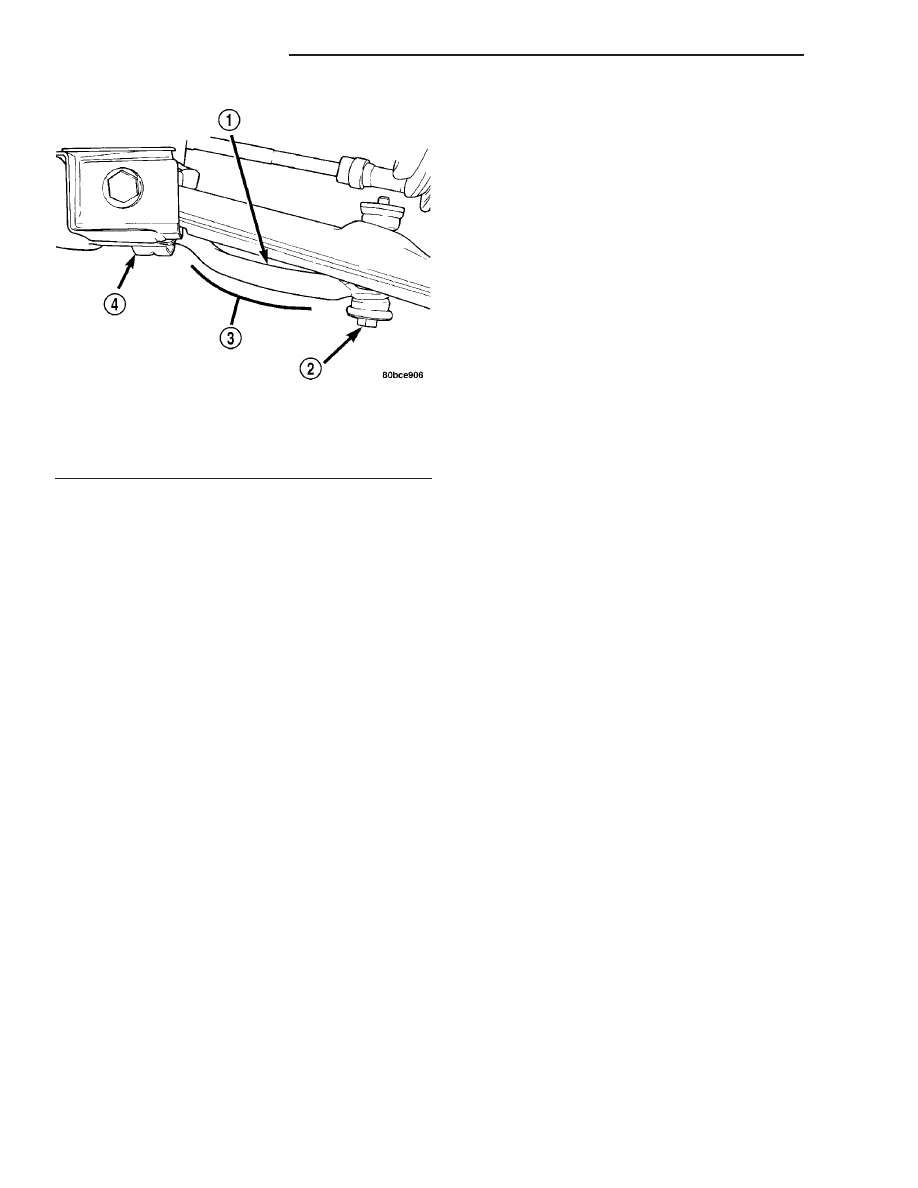Chrysler PT Cruiser. Manual - part 396

(3) Clean the threads of the stabilizer bar link
bolts, then apply Mopar
t Lock And Seal or equiva-
lent to the threads.
(4) Install both stabilizer bar links back on vehicle
(Fig. 36). Start each stabilizer bar link bolt with
bushing from the bottom, through the stabilizer bar,
inner link bushings, lower control arm, and into the
upper retainer/nut and bushing (Fig. 1). Do not fully
tighten the link assemblies at this time.
(5) Lower the vehicle.
NOTE: It may be necessary to put the vehicle on a
platform hoist or alignment rack to gain access to
the stabilizer bar mounting bolts with the vehicle at
curb height.
(6) Tighten each stabilizer bar link by holding the
upper retainer/nut with a wrench and turning the
link bolt. Tighten each link bolt to a torque of 29
N·m (260 in. lbs.).
(7) Tighten the stabilizer bar cushion retainer
bolts to a torque of 25 N·m (220 in. lbs.).
STRUT ASSEMBLY
DESCRIPTION
A Macpherson type design strut assembly is used
in place of the front suspension upper control arm
and upper ball joint (Fig. 1). The bottom of the strut
mounts directly to the steering knuckle using 2
attaching bolts and nuts going through the strut cle-
vis bracket and steering knuckle. The top of the strut
mounts directly to the strut tower of the vehicle
using the three threaded studs on the strut assem-
blies upper mount.
The strut assembly includes the following compo-
nents (Fig. 1):
• Upper mount (rubber isolated)
• Upper spring seat and bearing
• Dust shield
• Jounce bumper
• Coil spring
• Lower spring isolator
• Strut (damper)
Each component is serviced by removing the strut
assembly from the vehicle and disassembling it.
Coil springs are rated separately for each corner or
side of the vehicle depending on optional equipment
and type of vehicle service. If a coil spring requires
replacement, be sure that it is replaced with a spring
meeting the correct load rating for the vehicle and its
specific options.
OPERATION
The strut assembly cushions the ride of the vehicle,
controlling vibration, jounce and rebound of the sus-
pension.
The coil spring controls ride quality and maintains
proper ride height.
The spring isolators isolate the coil spring at the
top and bottom from coming into metal-to-metal con-
tact with the upper mounting seat and the strut.
The jounce bumper limits suspension travel and
metal-to-metal contact under full jounce condition.
The strut dampens jounce and rebound motions of
the coil spring and suspension.
DIAGNOSIS AND TESTING - STRUT ASSEMBLY
(FRONT)
Inspect the strut assembly for the following condi-
tions (Fig. 39):
• Inspect for a damaged or broken coil spring.
• Inspect for a torn or damaged strut assembly
dust shield.
• Lift the dust shield and inspect the strut assem-
bly for evidence of fluid running from the upper end
of the strut fluid reservoir. (Actual leakage will be a
stream of fluid running down the side and dripping
off lower end of unit). A slight amount of seepage
between the strut shaft and strut shaft seal is not
unusual and does not affect performance of the strut
assembly.
• Lift the dust shield and inspect the jounce
bumper for signs of damage or deterioration.
• Inspect the clearance between the shock tower
and the coil spring. Make sure no fasteners are pro-
truding through the shock tower possibly contacting
the coil spring and strut. Because of the minimum
clearance in this area (Fig. 38), installation of metal
Fig. 37 Downward Curve
1 - STABILIZER BAR
2 - LINK
3 - DOWNWARD CURVE
4 - CUSHION RETAINER
2 - 20
FRONT SUSPENSION
PT
STABILIZER BAR (Continued)